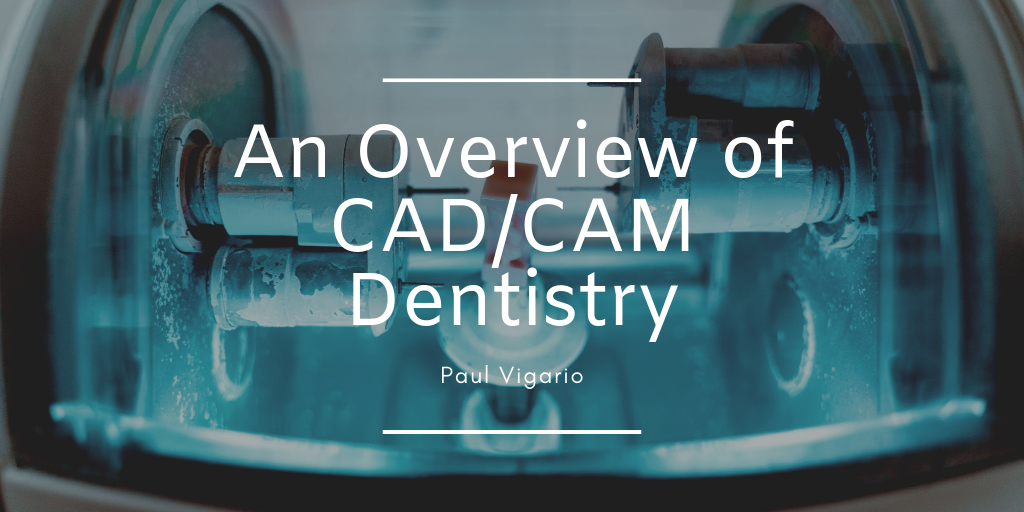Computer-aided design and computer-aided manufacturing, shortened to CAD/CAM, covers all software used in the designing and manufacturing of prototypes and finished products. Prototypes are designed in CAD software, and those digital designs translate to accurate physical alterations to raw materials via CAM software. While CAD/CAM originally found its footing in heavy-duty manufacturing, it has been adopted into a subset of dentistry known as CAD/CAM dentistry.
What is CAD/CAM Dentistry?
In the field of dentistry, CAD/CAM can aid in everything from regular check-ups to involved surgeries. Instead of shaping metal sheets for cars or industrial equipment, CAD/CAM for dentistry images patients’ teeth to produce 3-D prostheses. Unlike 3-D printing, which puts materials into a design, CAD/CAM chips away at a block of materials. CAD/CAM software is known for its high precision, especially compared to 3-D printers. Because of this precision, CAD/CAM is perfect for manufacturing small objects, such as dental restoration fillings. Additionally, CAD/CAM manufacturing takes much less time than 3-D printing.
CAD/CAM dentistry also limits the number of visits and overall amount of time spent on a given patient. Using common materials, CAD/CAM dentistry can repair compromised teeth in as little as one visit.
What Does CAD/CAM Dentistry Fix?
The better question is, what can’t CAD/CAM dentistry fix? Crowns, crown lays, veneers, inlays and onlays, implants, and orthodontic gear are all prostheses manufactured by CAD/CAM dentistry. Both types of composites come in metal, ceramic, porcelain, and resin forms, each with their own advantages and disadvantages.
To create these prostheses, dentists must first conduct a digital scan of a damaged tooth. The CAD/CAM software reverse engineers the missing parts of the tooth based on that image. Then, the 3-D model is sent to a milling machine, which carves a block of material to produce a precise prosthesis. The material, ceramic or resin in most cases, is coated with a glaze to match the patient’s existing teeth.
What Are the Disadvantages of CAD/CAM Dentistry?
While CAD/CAM dentistry should offer high speed and high quality for dentists, high equipment and software costs and training requirements can make the investment risky for some practices. This is particularly true of small practices, which may not see enough restorations in a year to warrant CAD/CAM investment. Additionally, the number of steps needed to create a prosthesis via CAD/CAM can make it tedious and time-consuming, even if the restoration only takes one visit.
However, CAD/CAM dentistry is still young—just barely 30 years old—and it has plenty of time to develop into the affordable, time-saving option it strives to be.
SurfCT.com is a world famous dental information technology company, founded by Mr. Paul Vigario. With many different services and DSD Technology Solutions offered to clients, SurfCT.com specializes in areas such as dental technologies, digital workflow, marketing, dental cloud solutions, and HIPAA compliance. SurfCT.com’s technology solutions are revolutionizing general, cosmetic, and pediatric dentistry, along with oral surgery, endodontics, orthodontics, and other specialized dental practices. At SurfCT.com Everything Is Connected™
